Menus
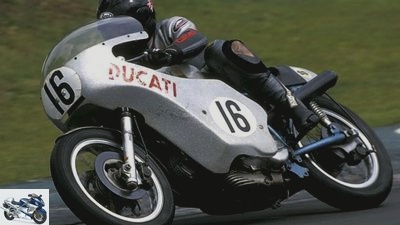
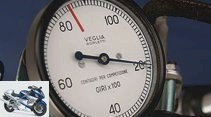
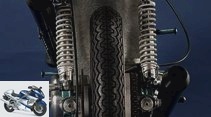
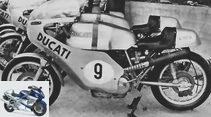
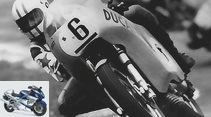
17th photos
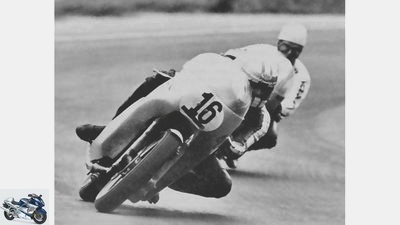
1/17
Smart leads his teammate Spaggiari. In 1972 they drove the entire racing elite, including Giacomo Agostini, to the ground.
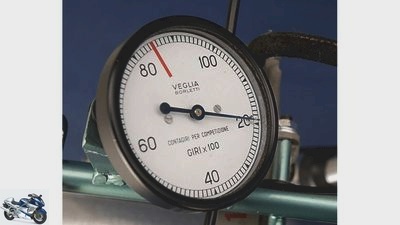
2/17
Here you can see how the Ducati turns.
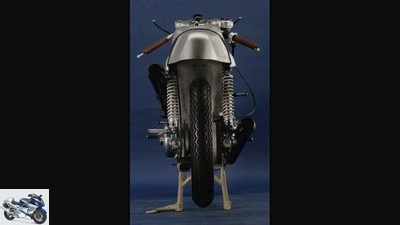
3/17
Thin tires and narrow waist of the Ducati 750 Imola.
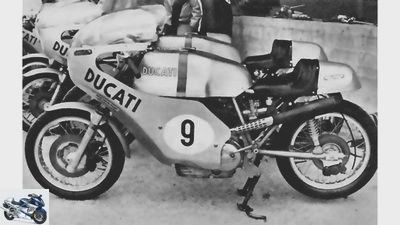
4/17
Allegedly seven racing machines were ready for the 200 miles of Imola.
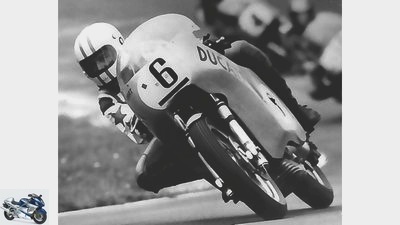
5/17
Here Paul Smart drives training laps with the number 6.
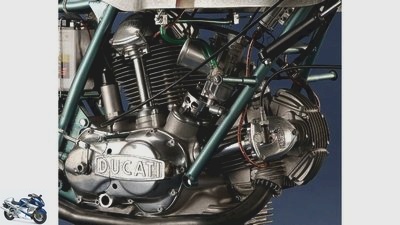
6/17
The 750-Desmo with double ignition.
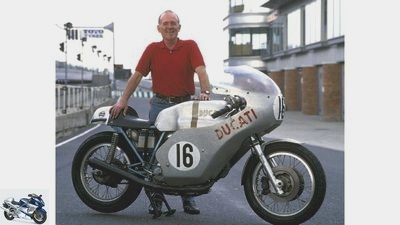
7/17
The smart Paul and his number 16, with which he won in Imola. Today he seldom takes them out for shows.
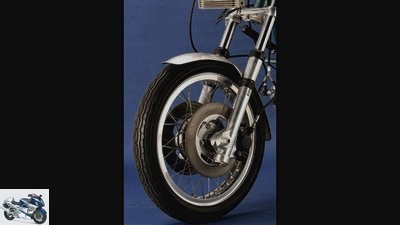
8/17
The 280 mm Lockheed double disc of the Ducati.
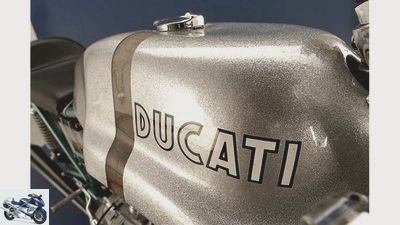
9/17
Again up close: the GRP tank with a view-"window".
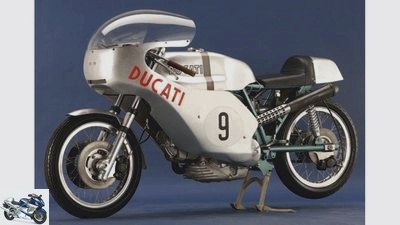
10/17
Looks like a Ducati GT 750 with fairing. Even behind the fairing, many components are the same as the series 750.
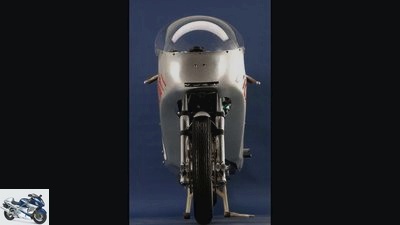
11/17
Ducati 750 Imola
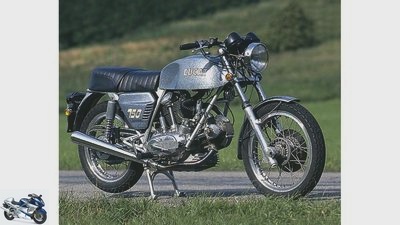
12/17
Ducati derived the Desmo racers from the GT 750 presented in 1971.
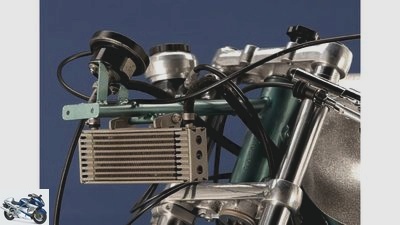
13/17
The air filter of the Ducati 750 Imola.
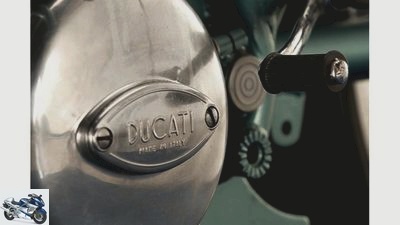
14/17
Made in Italy – Ducati 750 Imola.
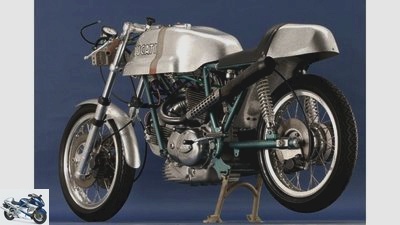
15/17
The replica that can be seen here, made in 1974, shows the transparent, paint-free stripe in the tank, which shows the driver the fuel level at all times.
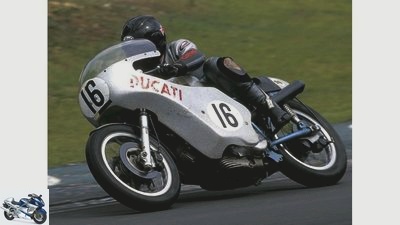
16/17
When Ducati achieved a double victory in Imola with its new 750 Desmos in 1972, the world took notice. Since the Ducati 750 Imola, the Bolognese have played in a different league.
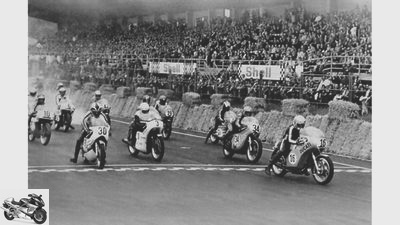
17/17
Not just at the forefront at the start – Ducati took the double victory at the 200 miles of Imola with their 750 Desmos.
In the studio: Ducati 750 Imola
The winning machine of the 200 miles of Imola in 1972
Content of
Ducati built only seven copies of the vertical shaft Desmos for the 200-mile race in Imola. They were created in record time and corresponded in many parts to the series GT 750.
In some details it can still be seen today that the Imola-Ducati was created under great time pressure and based on the production GT 750: The frame corresponds to the road machine, as the recordings for the main stand show. Because the single pane built into the prototype was not enough, I set up D.ucati in the front to a 280 mm Lockheed double disc. However, there were only left brake calipers in the parts store. Without further ado, the mechanics installed the brake calliper on the right-hand side with the connection facing down and extended the brake line. The mounting of the front fender is also improvised. Because the size of the racing tires did not match the position of the bracket, hose clamps held the sheet metal in the right place. Black tape covers the clamps. Other details are due to the requirements for the endurance race in Imola. The mechanics moved the left silencer up to increase the lean angle in curves.
The 200 miles from Imola were driven counter-clockwise, left turns dominated the course. The kick starter mechanism originally attached on the right-hand side fell victim to weight savings. Its dismantling also improved the ground clearance in right turns. A double ignition made it possible to set the ignition point back to 34 degrees. This should help keep the oil temperature in check. Because of possible heat problems behind the fairing, Taglioni installed the four ignition coils in front of the hot engine on the front frame tubes. The legendary transparent stripe on the transparent GRP tank – it also adorned the replica 750 SS in its first year of construction in 1974 – is a recess in the paintwork. With it, the driver could read the fuel level at any time. The start number 9 is a homage of the restorer to Spaggiari’s machine. The Ducati pictured was probably number 6 at the time and now belongs to a German collector.
The Ducati in racing
archive
Not only right at the front at the start – Ducati with their 750 Desmos immediately took the double victory in the 200 miles of Imola.
March 20, 1970 is considered to be the hour of birth of the Ducati vertical shaft twin. On this day, chief designer Fabio Taglioni drew the first sketches of the 90 ° -V2. By then the brand had made a name for itself with sporty single-cylinder four-stroke engines up to 450 cc. But the market was now calling for large-volume motorcycles called, for example, Honda CB 750, BMW R 75/5, Kawasaki Mach III or Suzuki GT 750.
In the autumn of 1970, the managing director Fredmano Spairani and the chairman of the board Amaldo Milvio decided that Ducati would again have to contest international races with a factory team. The company had not participated in world championship races since 1958. This was the starting signal for the development of the Imola machine, and Taglioni did everything possible to fulfill the decision. In November, visitors to the Milan Salon marveled at Ducati’s first big bike, the GT 750 with the new vertical shaft motor. And at the beginning of 1971 the first GP racers started in the 500cc class with the new V-Twin. Spairani hoped that participating in the race would have an advertising effect for the 750 cc road machine. At the same time, Taglioni worked on the Imola 200 mile racing machine.
This race was an offshoot of the American Daytona formula and was to take place in Europe for the first time. The regulations stipulated that near-series motorcycles up to 750 cm³ competed against each other.
In August 1971 Mike Hailwood tested a prototype with the 750 twin-cylinder engine on the Silverstone track, which was stuck in a Seeley chassis. This forerunner showed a clearer relationship to the 500cc GP racer than to the GT 750, the series production of which had just started. The sand-cast housing of the engine corresponded to that of the GP machine, as did the dry clutch and six-speed gearbox. It was the first 750 Ducati to have a desmodromic valve control. Allegedly the “L-Motor” had 75 HP and turned up to 11,500 rpm, ventilated by two 40 mm Dell’Orto carburetors. Hailwood achieved the sixth fastest time in training. But he did not compete with the Ducati for the race. “The handling just wasn’t good enough,” he announced. The 750 engine and the 500 frame didn’t seem to go well together. Something of its own was needed for the 200 miles from Imola.
archive
Ducati derived the Desmo racer from the GT 750 presented in 1971.
Taglioni only had a few weeks left until the start. It was only shortly before the race that he presented the final racing machine. It met the requirements of the regulations, so it was largely derived from the street machine that could be bought. Taglioni took the frame from the series production of the GT, as evidenced by the consecutive numbering and the recordings for the main stand. The gearbox also corresponded to that of the series machine, Ducati did without a dry clutch. As with the prototype, a desmodromic controlled the valves; Camshafts with changed timing and reinforced connecting rods were further significant modifications. Compared to the series, compression was increased from 8.5: 1 to 10: 1. According to the factory, the dry machine weighing 178 kg developed 84 hp at 8800 rpm and turned up to 9200 rpm.
The racing department allegedly built up seven of these Desmo racers. Ducati wanted to start with four drivers. The plant tried to hire another top driver in addition to Bruno Spaggiari, Ermanno Giuliano and the Briton Alan Dunscombe. But Jaro Saarinen, Renzo Pasolini and Berry Sheene refused. Nobody gave the Ducati a real chance of victory. It is probably thanks to his wife that Paul Smart completed the team. At first he did not trust the Bolognese to be competitive either. The greater the surprise when, in the first test runs four days before the race, he pulverized Agostini’s lap record, which he had recently set with his 500cc GP machine.
The seven Desmo-Twins made their way to the racetrack of the Autodromo Dino Ferrari in a glass-covered exhibition car. MV Agusta, BSA, Triumph, Norton, Laverda, Moto Guzzi, Honda, Kawasaki and Suzuki had registered works teams. The best drivers were ready for the first European race of the Formula 750, above all the ten-time world champion Giacomo Agostini with his MV.
As a small manufacturer, Ducati hardly seemed to stand a chance in the upcoming material battle. But in practice, Smart and Spaggiari surprised with the best lap times. At 1 p.m. on April 23, the starting flag was lowered. 70,000 spectators cheered when Giacomo Agostini immediately took the lead in his MV Agusta. Paul Smart and Bruno Spaggiari followed in second and third place on their two-cylinder Desmos. After the fourth lap, Smart with his roaring Ducati managed to overtake Agostini; shortly afterwards, Spaggiari passed him with the number 9. The two Ducati drivers could not be taken from their top positions and made the race among themselves in the final laps. Spaggiari got ahead of Smart on lap 57. When he ran out of gas a few laps before the finish line and his engine began to stutter, Smart took over the lead again and won the race. Spaggiari finished second.
With this one-two victory, Ducati arrived in the world of big bikes. Fabio Taglioni put it in a nutshell: “When we won in Imola, we won the market too.” This success led to the development of the 750 Sport and the Imola replica, the 750 Super Sport, which was built from 1974. Last but not least, the GT 750 established a whole series of vertical shaft twins that were built until 1986. Today they are coveted collector’s items.
Related articles
-
Ducati driving report Ducati GT 1000 The first and the last Inspired by the past: The GT 1000 bows to the first series Duc with …
-
In the studio: The German Norton NSU 501 OSL
Bilski 12th photos Bilski 1/12 And the NSU carburetor. Bilski 2/12 The NSU 501 OSL in the horizontal view. Bilski 3/12 The finely crafted leather saddle….
-
Zerha / Archiv Kultbike Ducati 750 F1 Dream of a motorcycle Just sold to Cagiva, Ducati gave birth in 1985 with the Ducati 750 F1 one of the …
-
Ducati Scrambler Icon in the PS performance test
andreasriedmann.at 18 pictures andreasriedmann.at 1/18 Ducati Scrambler Icon in the PS performance test. andreasriedmann.at 2/18 Ducati Scrambler Icon in …
-
Nakamura CLASSIC on the move Ducati Apollo Content of In the early 1960s, Ducati created a mighty street motorcycle with a V4 engine. His name Apollo…
-
Driving report Ducati ST2 Spagati Bolognese With the new Ducati ST2, the Bolognese leave the path of uncompromising sportiness and dare to …
-
Driving report Ducati Hypermotard
Jahn driving report Ducati Hypermotard (2007) Hyper, Hyper There have only been a few innovations in recent times that have caused so much attention and …
-
Hartmann 12th photos archive 1/12 Narrow engine, tight-fitting cladding, raised silencers – this is how the 916 enables inclined positions to beyond the…
-
Exclusive: Ducati novelties Tokyo
Ducati Exclusive: Ducati novelties Tokyo In the spirit of Doctor T. Back to the 70s: Ducati puts three retro models up for discussion. Who D …
-
Ducati V4 R (2019) in the driving report
Motorcycle fair in Milan EICMA 2019 Presented by Ducati 31 images Ducati 1/31 We were already able to drive the new Ducati V4 R in Jerez. Ducati 2/31 …